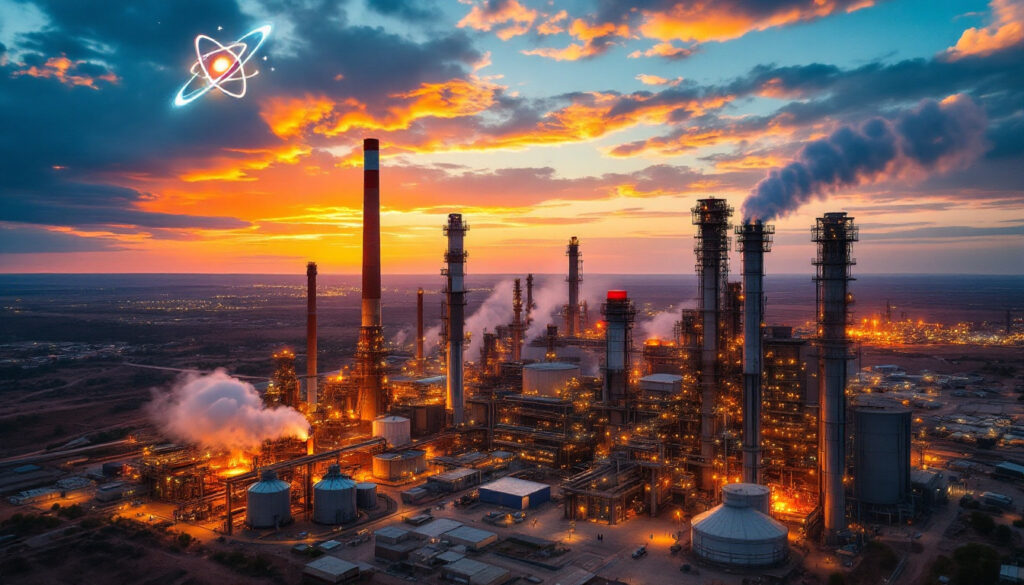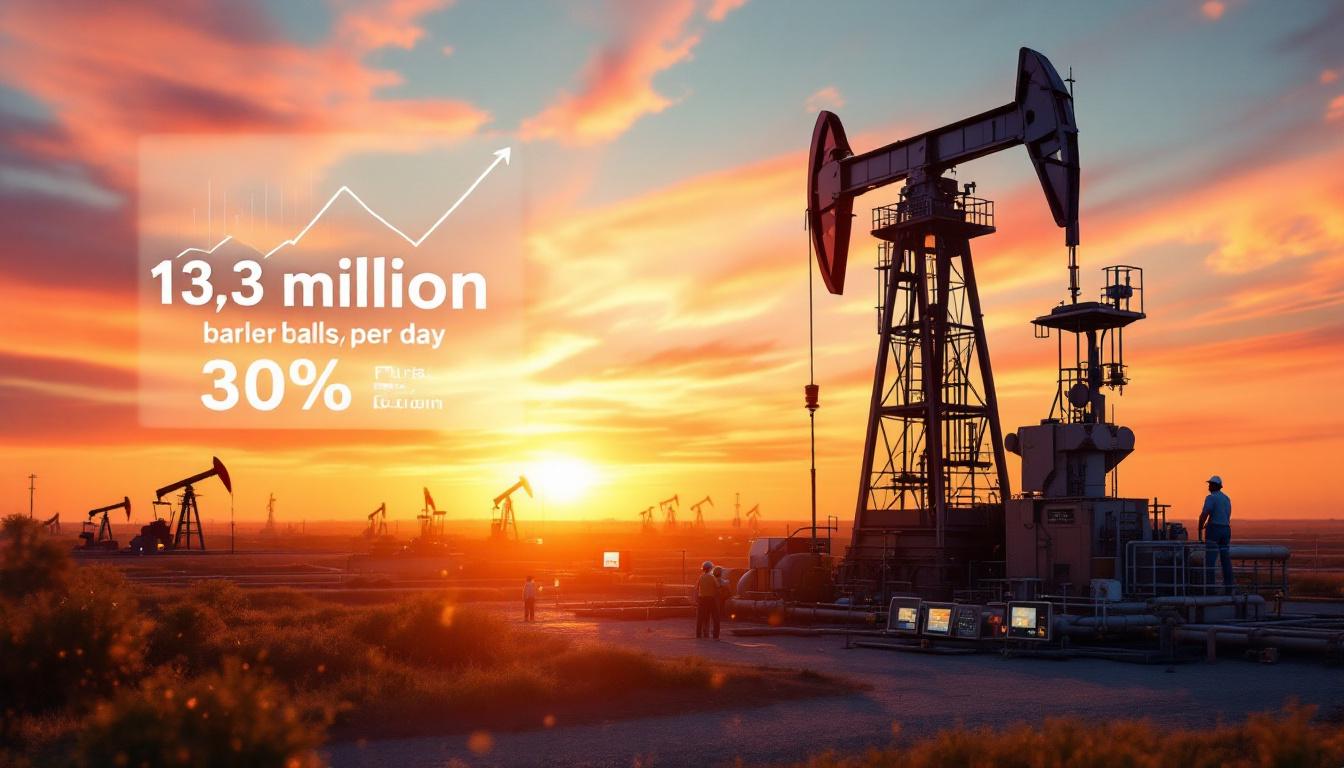Understanding Glencore's Mount Isa Copper Smelter Bailout Request
Glencore's Mount Isa copper smelter, a century-old operation vital to Australia's minerals processing capability, faces an uncertain future as global market pressures intensify. The mining giant is currently seeking financial assistance from both Queensland and federal governments to maintain operations beyond 2025, raising critical questions about Australia's industrial sovereignty and regional economic stability. This situation reflects broader mining sector trends in Australia that have been developing over recent years.
What Is Happening at Glencore's Mount Isa Copper Operations?
The Current Situation
Glencore is actively pursuing financial support from Queensland and federal governments to keep its Mount Isa copper smelter operational amid challenging global market conditions. This bailout request comes on the heels of Glencore's announcement regarding the closure of its Mount Isa underground copper mine, which has already resulted in 500 job losses across the region.
Approximately 680 jobs remain directly linked to the copper smelter in Mount Isa and the connected Townsville copper refinery operations, both hanging in the balance as Glencore weighs its options. The company has indicated it will make a final decision on whether to proceed with the 2026 copper smelter rebrick—an essential maintenance procedure—by the end of 2025.
Sam Strohmayr, Glencore's Chief Operating Officer, has emphasized the strategic importance of these facilities while highlighting the challenging market conditions that have precipitated the current crisis.
Economic Challenges Facing the Operation
The global copper processing landscape has shifted dramatically, with treatment and refining charges dropping to unprecedented lows—the most significant decline in 25 years. This contraction in processing fees has severely impacted the financial viability of operations like Mount Isa.
Chinese and Indonesian smelters operate with substantial government subsidies, creating an uneven playing field that Australian operations struggle to compete within. According to industry experts, these subsidies can amount to hundreds of millions of dollars annually, enabling international competitors to process copper concentrate at rates that are commercially unsustainable without similar support.
The Mount Isa smelter requires a comprehensive maintenance process known as "rebricking" every four years, involving the replacement of approximately 60,000 specialized bricks at a multi-million dollar cost. This regular capital-intensive maintenance cycle adds significant pressure to the operation's economic sustainability, particularly in the context of current copper price forecast 2025 projections.
Why Is This Copper Smelter Important?
Strategic Significance for Australia
The Mount Isa facility represents one of only two copper smelters in Australia, with BHP's Olympic Dam in South Australia being the other. This limited domestic processing capability makes each facility crucial to Australia's minerals sovereignty.
Copper is essential for virtually all modern technologies, electrical systems, and renewable energy infrastructure. From electric vehicles to solar panels and wind turbines, the green energy transition relies heavily on copper as a fundamental component.
Without domestic processing capabilities, Australia would be forced to export raw copper concentrate overseas for processing, losing the value-added components of the supply chain and becoming increasingly dependent on foreign processing capacity.
These facilities represent a critical component in Australia's minerals processing capability, particularly as the nation seeks to capitalize on its natural resources in the evolving global economy focused on decarbonization.
Regional Economic Impact
The combined operations of the copper smelter and Townsville refinery directly employ 680 people, with thousands more jobs supported indirectly throughout the supply chain and local economies.
Mount Isa is already facing significant economic challenges following the closure of the underground copper mine. As a resource-dependent community, the city's economic sustainability is closely tied to the mining operations that have defined the region for generations.
The smelter has been operating for over 100 years as an integral part of the Mount Isa Mines complex, representing not just an economic asset but a historical and cultural touchstone for North Queensland.
Local Member of Parliament Robbie Katter has stressed that "you can't afford to lose domestic processing capabilities," highlighting the broader concerns about regional economic stability that extend beyond direct employment numbers.
What Solutions Are Being Proposed?
Government Support Options
Glencore has previously received tens of millions in Queensland government support for maintenance operations, establishing a precedent for public investment in keeping the smelter operational.
Current requests focus on financial backing to maintain operations amid the unprecedented global market pressures that have driven processing fees to historic lows. The exact figure being sought remains undisclosed, but industry analysts suggest it could be substantial given the scale of international subsidies provided to competing facilities.
Queensland Minister for Natural Resources and Mines Dale Last has stated the government is "working collaboratively and urgently" on a path forward, acknowledging the strategic importance of the facility while being mindful of taxpayer interests.
Multiple support options are reportedly being considered, ranging from direct financial assistance for the upcoming rebricking process to longer-term structural changes that might ensure the smelter's viability beyond the immediate crisis.
Alternative Ownership Models
MP Robbie Katter has suggested a more fundamental solution involving changes to the ownership structure of the smelter. His proposal centers on transferring "power away from Glencore and back to the government" in some form of public-private partnership.
A model involving shared maintenance responsibilities among multiple mining companies operating in the region has been floated as one potential option. This approach would distribute the significant costs associated with keeping the smelter operational across various stakeholders who benefit from domestic processing capacity.
A restructured ownership model, potentially involving government equity or a cooperative industry structure, could provide long-term stability by moving away from dependence on a single corporate entity's commercial decisions.
Industry experts note that similar models have been implemented in other countries facing comparable challenges with strategic industrial assets, suggesting that creative solutions exist beyond simple subsidies, which could lead to meaningful mining industry transformation.
How Does This Compare to Other Australian Smelting Operations?
Similar Challenges Nationwide
The Port Pirie Lead Smelter in South Australia faces comparable economic pressures, highlighting that the challenges at Mount Isa are not isolated but representative of broader industry trends.
Trafigura, the parent company to Nyrstar Australia, has candidly described the SA smelter as an "uncompetitive asset" in the current global market environment, echoing many of the same concerns raised by Glencore regarding Mount Isa.
Trafigura CEO Richard Holtum has publicly stated that facilities like the Port Pirie smelter "shouldn't be in fully private hands," suggesting that the economics of metals processing in Australia may require new ownership models across the sector.
South Australia's mining minister Tom Koutsantonis has thus far resisted offering government support for the Port Pirie operation, creating divergent approaches between state governments on how to address similar challenges.
Contrasting Developments
In contrast to the potential contractions at Mount Isa and Port Pirie, BHP is expanding Australia's only other copper smelter at Olympic Dam in South Australia with a $1.7 billion investment aimed at doubling copper output by 2030.
This expansion represents a markedly different approach to copper processing in Australia, potentially indicating BHP's greater confidence in the long-term economics of domestic processing or reflecting different operational considerations at Olympic Dam.
The contrast between BHP's expansion and Glencore's potential contraction highlights different corporate strategies toward domestic mineral processing, possibly reflecting differences in ore grades, operational efficiencies, or corporate priorities. The Rio Tinto copper strategy presents yet another approach among major mining companies operating in the region.
Industry analysts suggest that BHP's integrated mining and processing operation at Olympic Dam may provide economies of scale that standalone facilities like Mount Isa cannot achieve without government support.
What Are the Broader Implications?
For Australia's Critical Minerals Strategy
The potential closure threatens Australia's position in the copper supply chain at a time when nations globally are seeking to secure critical minerals processing capacity as a matter of economic security.
Without robust domestic processing capability, Australia risks becoming merely an exporter of raw materials, losing the value-added components of the supply chain that generate higher economic returns and skilled employment.
The situation raises fundamental questions about Australia's critical minerals security and sovereignty, particularly as copper remains essential to the renewable energy transition that forms a cornerstone of national climate policy.
Government intervention decisions could set important precedents for other mineral processing facilities facing similar pressures, potentially reshaping Australia's approach to industrial policy in the resources sector.
For Future Copper Production
Without the smelter, future copper mining prospects in the region would be significantly constrained, as producers would face higher transportation costs to access processing facilities overseas.
Ore would likely be shipped offshore as bulk concentrate for processing, decreasing the economic return to Australia from its mineral resources and potentially making marginal deposits uneconomical to develop.
Australia's ability to capture value from its mineral resources would be diminished precisely when global demand for copper is projected to increase substantially due to decarbonization efforts.
The outcome will influence investment decisions for future copper mining operations across Queensland, with potential investors likely to factor in the availability of domestic processing infrastructure. This also presents important considerations for those investing in mining stocks in the region.
FAQ About the Mount Isa Copper Smelter Situation
What is rebricking and why is it important?
Rebricking is a critical multi-million dollar maintenance process that occurs every four years at the Mount Isa copper smelter. It involves replacing approximately 60,000 specialized bricks that line the smelter, protecting the steel shell from the extreme temperatures (exceeding 1,200°C) required for copper processing.
The next scheduled rebrick is due in 2026, representing a significant capital investment decision point for Glencore. The 2022 rebrick required a six-week shutdown and a substantial workforce to complete the operation.
The decision to proceed with this maintenance will be made by the end of 2025, effectively setting a deadline for government and industry to find a sustainable solution for the smelter's future.
Without rebricking, the smelter cannot continue to operate safely or efficiently, making this maintenance process an essential but costly requirement for continued operations.
What has been Glencore's history with the Mount Isa operations?
Glencore took ownership of the Mount Isa Mines complex in 2013 as part of its merger with Xstrata, which had acquired the operations from MIM Holdings in 2003. This represented a significant consolidation in the global mining industry.
The company has received tens of millions in Queensland government support for maintenance operations in the years since taking ownership, establishing a pattern of public-private cooperation to maintain the facility.
Glencore has already announced the closure of the underground copper mine, signaling a potential withdrawal from copper operations in the region despite continuing zinc mining activities.
The company consistently describes the smelter and refinery as "strategic" Queensland assets while simultaneously indicating that their commercial viability depends on external support, creating a complex negotiating dynamic with government stakeholders.
What would happen if the smelter closed?
Nearly 700 jobs would be directly at risk between the smelter and refinery operations, with thousands more indirectly affected throughout supply chains and local businesses dependent on the operations.
Copper ore from the region would likely be exported as bulk concentrate for overseas processing, primarily to Asian smelters, reducing the value captured within Australia from its mineral resources.
The regional economy would face significant challenges, with Mount Isa potentially experiencing a substantial contraction in population and economic activity following the earlier closure of the underground mine.
Australia would lose one of its two remaining copper smelting operations, reducing domestic processing capacity at a time when copper demand is projected to increase significantly due to the global energy transition.
Are You Capitalising on Major Mineral Discoveries?
Don't miss the next significant ASX mineral discovery that could transform your portfolio – Discovery Alert's proprietary Discovery IQ model delivers real-time notifications on high-potential mineral discoveries as they happen. Explore historic returns from major discoveries on our dedicated discoveries page and position yourself ahead of the market.




